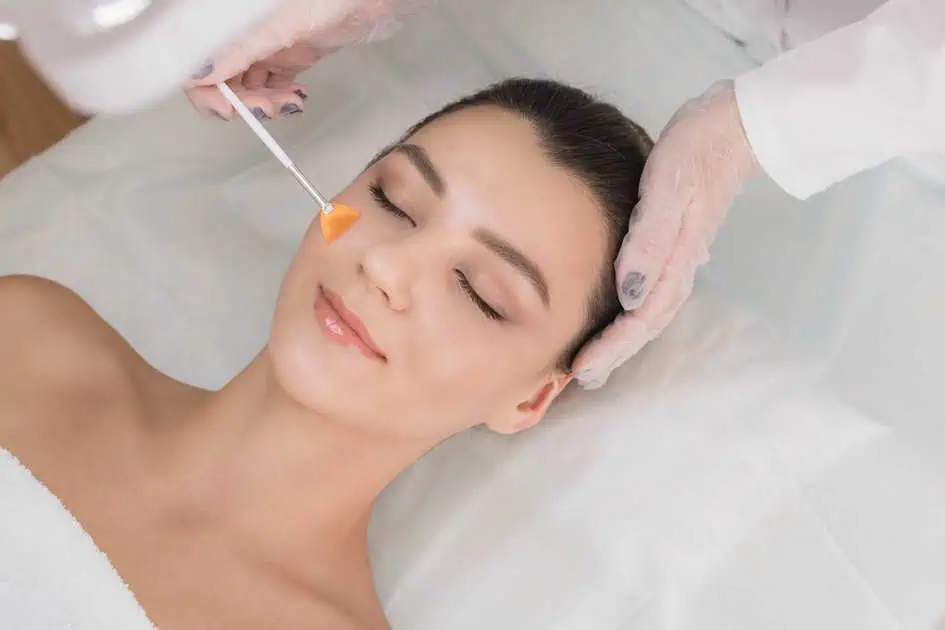Chemical peels have been a go-to treatment in dermatology for decades. They work by applying a solution that exfoliates the outer layers of skin, promoting the growth of new, healthier skin beneath. Not all chemical peels are equal, though. In recent years, the VI Peel treatment has gained popularity as a powerful yet gentle alternative to traditional peels.
But how does the VI Peel differ from conventional chemical peels? Let’s dive into the details.
What is a VI Peel?
The VI Peel is a medium-depth chemical peel intended to enhance the skin’s clarity, tone, and texture. The Vitality Institute created it, containing a special combination of vitamin C, retinoic acid, salicylic acid, phenol, and TCA (trichloroacetic acid). Unlike many traditional peels, the VI Peel is gentle enough to be used on all skin types, including sensitive skin, and it offers a shorter recovery period with less discomfort.
What makes VI Peels stand out?
Minimal Downtime: One key benefit of the VI Peel is the minimal downtime associated with the treatment. Unlike deep chemical peels that may leave the skin red, raw, and flaky for days or weeks, the VI Peel allows patients to resume their daily activities much sooner. Peeling usually begins around day three and can last up to a week, but the process is generally mild and manageable.
Gentle Yet Effective: While the VI Peel is considered a medium-depth peel, it is less aggressive than many traditional options, making it suitable for individuals who may not tolerate harsher treatments. Its formulation is designed to be gentle on the skin while still providing impressive results, especially for those dealing with pigmentation issues, acne, and signs of aging.
Versatility for Various Skin Concerns: The VI Peel treatment can be tailored to address specific needs, such as hyperpigmentation, wrinkles, and acne scars, or even to improve the general tone and texture of your skin. Several variations of the VI Peel are available, each targeting different skin concerns, which gives it an edge over some one-size-fits-all traditional chemical peels.
Safe for All Skin Types: Traditional chemical peels, especially stronger ones, can sometimes be too harsh for individuals with darker or more sensitive skin. The VI Peel, however, is formulated to be safe for all skin tones, minimizing the risk of post-inflammatory hyperpigmentation (PIH), a common concern with deeper peels.
What are traditional chemical peels?
Traditional chemical peels are classified into three categories based on their depth: superficial, medium, and deep. Each type has its benefits, but they also have certain drawbacks compared to modern options like the VI Peel.
Superficial Chemical Peels
These peels are the mildest form and use alpha hydroxy acids (AHAs) or beta hydroxy acids (BHAs) to exfoliate the skin. Superficial peels are typically used to treat minor skin issues such as dullness, slight discoloration, and clogged pores. They are often called “lunchtime peels” because there is minimal downtime, and patients can return to work immediately. However, the results are subtle and require repeated treatments to improve significantly.
Medium Chemical Peels
Medium peels, such as those using TCA (trichloroacetic acid), penetrate deeper into the skin to treat more pronounced concerns like acne scars, sun damage, and fine lines. These peels provide more noticeable results than superficial peels but also come with longer downtime, redness, and peeling that can last several days.
Deep Chemical Peels
Deep peels, the strongest of traditional peels, are typically performed using phenol or high concentrations of TCA. They are designed to treat severe wrinkles, deep scars, and significant skin damage. Due to their intensity, deep chemical peels require a longer recovery period, and the risk of side effects such as hyperpigmentation or scarring is higher, especially for individuals with darker skin tones.
VI Peel vs. Traditional Peels: A Side-by-Side Comparison
Now that we’ve explored the basics of the VI Peel and traditional chemical peels, let’s break down the key differences that can help you decide which treatment best suits your skin.
Depth and Results
- VI Peel: A medium-depth peel that provides significant results with less discomfort. It is versatile enough to address concerns like acne, hyperpigmentation, and fine lines without repeated sessions.
- Traditional Peels: While superficial peels offer subtle results with little downtime, medium and deep peels can deliver more dramatic changes. However, these come with greater discomfort and extended recovery time.
Downtime
- VI Peel: Expect mild peeling that starts around day three and lasts up to a week. Most people can resume daily activities immediately, with only minimal disruption.
- Traditional Peels: Superficial peels have little to no downtime, but medium and deep peels can require days or even weeks of recovery, during which skin may be red, swollen, and peeling extensively.
Safety for All Skin Types
- VI Peel: One of the biggest advantages of the VI Peel is its safety for all skin tones. It is an excellent option for individuals with darker complexions, as it minimizes the risk of hyperpigmentation.
- Traditional Peels: Even when effective, stronger peels are more likely to have adverse effects on those with darker complexions. For most skin types, superficial peels are usually harmless, but deeper peels may result in pigmentation problems.
Customization
- VI Peel: The VI Peel comes in different formulations to target specific skin concerns, such as acne scars or hyperpigmentation. This allows for a more tailored approach to skincare.
- Traditional Peels: Traditional peels are often categorized based on their depth, with fewer options for customization. Deeper peels are a one-size-fits-all approach, which may only be ideal for some skin conditions.
Comfort During Treatment
- VI Peel: Many patients report minimal discomfort during the VI Peel treatment, another reason for its rising popularity. A numbing agent is included in the peel’s formulation, reducing stinging and irritation.
- Traditional Peels: Superficial peels are painless, but medium and deep peels can cause a burning sensation during the procedure. Post-treatment discomfort is also more pronounced with stronger traditional peels.
Which Treatment is Right for You?
Choosing between a VI Peel and a traditional chemical peel depends on your skin type, concerns, and goals.
Choose the VI Peel if:
- You have sensitive skin, darker skin tones, or specific concerns such as acne scars, hyperpigmentation, or early signs of aging. The VI Peel offers a more comfortable experience with less downtime and is customizable to address various skin issues. It’s an excellent option for those seeking noticeable results without the extended recovery associated with deeper peels.
Choose a Traditional Chemical Peel if:
- If you have deeper wrinkles or significant sun damage, seek more intensive treatment. While the downtime and potential for discomfort are higher, traditional peels, particularly medium and deep options, can deliver dramatic results for those with severe skin concerns.
Conclusion: The Best Peel for You
While the VI Peel and traditional chemical peels have their place in skincare, their innovative formulation, versatility, and shorter recovery time make them a standout choice for many people. Whether you’re dealing with acne scars or hyperpigmentation or want to refresh your skin, the VI Peel offers an effective and gentle solution for radiant skin.
Ready to experience the transformative effects of the VI Peel? Book Your VI Peel Treatment Today and discover how this advanced peel can reveal your best skin. Contact A Better Solution to schedule your appointment and take the first step toward clearer, more youthful skin.





